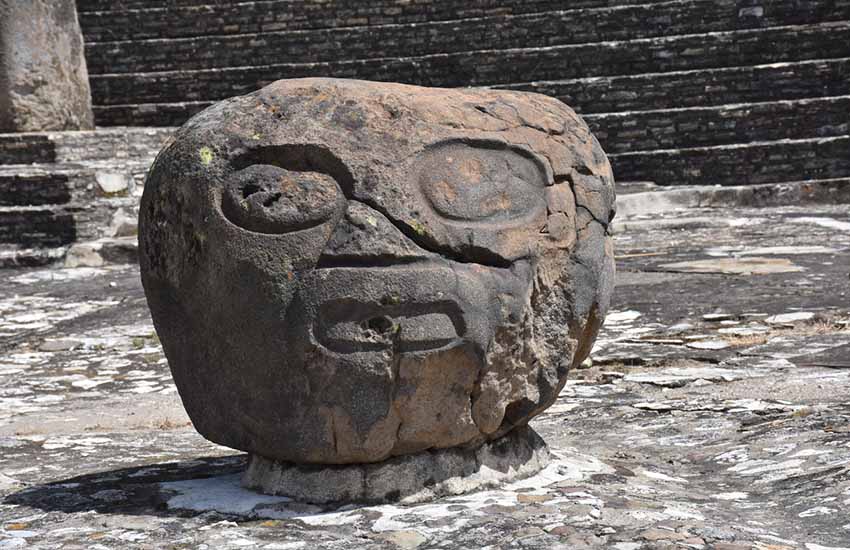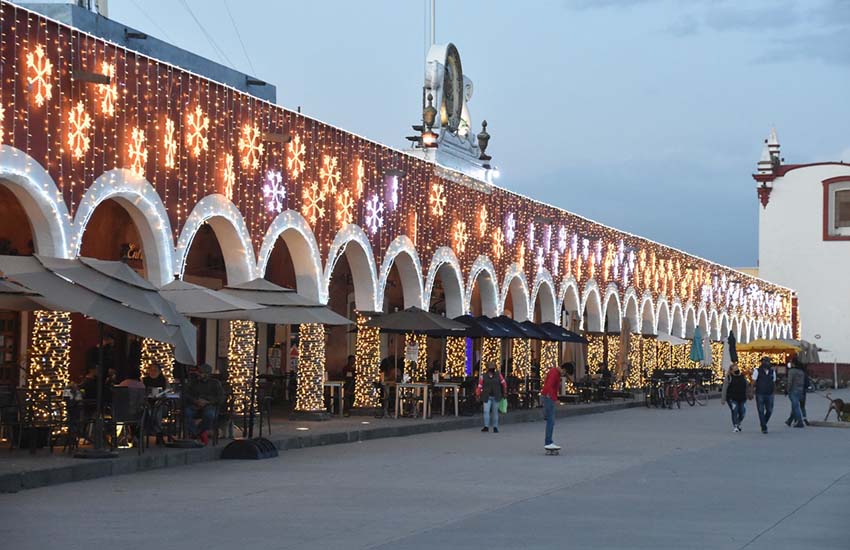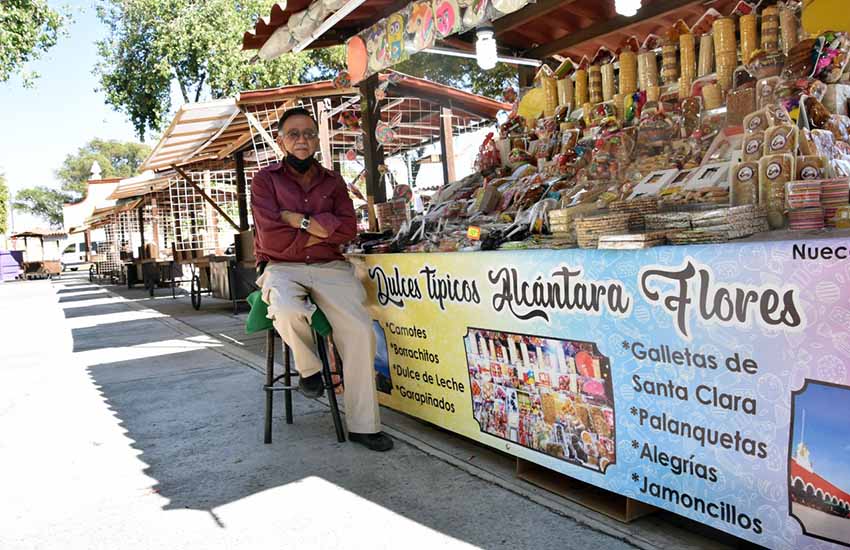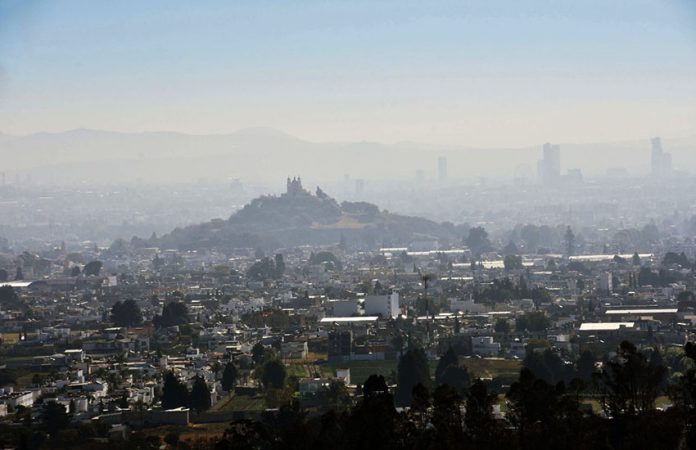It may not be as famous or get as many Instagram posts as the Great Pyramid of Giza or even Mexico’s own Chichén Itzá, but Tlachihualtepetl, better known by the far more pronounceable name, The Great Pyramid of Cholula, is nevertheless impressive: by volume, it’s the world’s largest pyramid.
No wonder its original Nahuatl name means “mountain made by hand” or “human-made mountain.” The Cholula name comes from San Andrés Cholula, the town where it’s located in Puebla.
It stands 25 meters tall and has a base that’s 300 by 315 meters. Though it’s dwarfed in height by the Giza pyramid, at 146.6 meters, the Cholula pyramid total volume — 4.45 million cubic meters — is almost double that of the Egyptian pyramid.
It’s also the oldest continually occupied site in Mexico. The pyramid was built and frequently modified over at least 1,000 years, with the first construction phrase happening probably around 200 B.C. and then continuing on as several different indigenous groups took it over. Each built on top of or modified the existing pyramid. It’s thought that the pyramid has undergone four major constructions and was modified at least nine times.

Tlachihualtepetl was dedicated to Quetzalcoatl (the Plumed Serpent), one of the most important gods in Mesoamerica. He was — and still is — worshipped as the god of wind and rain who was also responsible for creating the world and humans. It’s still an important pilgrimage site for indigenous Mexicans.
One of the nice things about this site is that not only are you allowed to climb this pyramid (unlike many others in Mexico), a wide stone path actually leads you to the top. There are warnings not to attempt the climb if you’re suffering from heart problems or other ailments, but nevertheless, the admittedly somewhat steep walk to the peak takes less than five minutes at a moderate pace.
Shortly before you reach the church that stands atop the pyramid, the Iglesia de Nuestra Señora de los Remedios (Church of Our Lady of the Remedies), this path will fork into three roads. The left two lead to the church, and the right one leads to where you want to go — the ruins below.
Incidentally, the church, built by the Spanish in 1594, is also worth a visit if you have time. Thousands of Catholics do a pilgrimage here due to the small figure of the Virgin of the Remedies enclosed in a glass case inside. Pilgrims arrive on the night before her feast day of September 8 so they can greet her early in the morning.
Indigenous pilgrims come here on the spring equinox to celebrate with dancing, music and fireworks.
If you take the fork’s right path to the pyramid, you’ll get a view of the archeological site before you arrive. Entry is a modest 85 pesos, and there are several information signs set among the ruins explaining what some of the buildings were used for.
The first people arrived in this area around 3,000 years ago. Over the centuries, the city was conquered and occupied by the Olmecs, Toltecs and finally the Mexicas (Aztecs). At its peak, it reached an estimated population of 100,000.
Some of the buildings exhibit architectural designs like those found in Teotihuacán to the north, suggesting a link between the two. Others have seashells and other marine designs, indicating trade with coastal civilizations.

Off to one side of the ruins is a reproduction of Los Bebedores (The Drinkers), is located deep within the pyramid and, unfortunately, off-limits to the general public. The actual mural stretches 56 meters (184 feet) and depicts a celebration where people are drinking pulque, a mildly alcoholic drink still drunk today in Mexico.
The city underwent a period of decline between A.D. 500 and 800. Between A.D. 700 and 800, work on the pyramid halted. Researchers give three possible explanations: Popocatépetl erupted in A.D. 500, which may have forced people to leave; a nearby lake may have flooded the city; or people may have moved to Zapotecas, a nearby hill, in order to facilitate trade with other civilizations.
When the conquistador Hernán Cortéz saw Cholula, he declared it to be the most beautiful city outside of Spain. That did not, however, stop him from perpetrating one of the most horrific events of the Conquest, which probably occurred in the courtyard in front of the pyramid in October, 1519.
Cortés had made an alliance with the Tlaxcalans, who were the city’s enemies. He marched from Tlaxcala to Cholula with his soldiers and probably thousands of Tlaxcalan warriors, reaching the city on October 14. Supposedly told of a plot against his troops, he invited the Cholulan nobles a few days later to a meeting in their courtyard, according to one source, leaving the Tlaxcalan warriors outside. Once inside the courtyard, the Tlaxcalan warriors streamed in, slaughtering several thousand unarmed Cholulans.
Just behind the pyramid is the The Regional Museum of Cholula. Housed in a former psychiatric hospital opened in 1910, there are stories of ghosts wandering the museum. The six-room facility displays artifacts from different periods of Cholula’s history. All the rooms are worth visiting. Room 8 is dedicated to Puebla’s popular art, displaying works from across the state, including traditional tree of life figures, tapestries and Talavera. Entrance costs 42 pesos. Be warned it’s closed on Mondays.
Although best known for the pyramid and the archeological site, San Andrés Cholula also boasts a number of excellent restaurants and coffee shops once you’re done perusing the ruins. Several are located just across the way. Ringing the courtyard and along the walkway adjacent to the pyramid are the many souvenir stands you’d expect, but on weekends, you’ll likely catch performances by voladores — Puebla’s aerial acrobatic tradition on UNESCO’s list of intangible human heritage.
Although it’s been said that the city has 365 churches, that’s probably not true. For sure, there are a lot, so you’ll have plenty to choose from and more for a return visit.
Calle Morelos, a street lined with shops, leads from the pyramid to the city’s zócalo (main square), where there’s a lovely park, more restaurants and more stands selling ice cream and candies, perfect for aimless, relaxed sightseeing. On weekends, there’s also a small art fair in front of the park’s gazebo, organized by an artists’ cooperative.

No trip to Cholula is complete without eating a cemita, a sandwich filled with different meats and cheese, as well as Santa Claras, a delicious cookie you won’t soon forget.
If you still have time, Cerro Zapoteca, a hill a short distance from the city center, is also worth a trip for its many hiking trails a great view of the pyramid; the monster pyramid looks large up close, but it’s only from a distance that its size can truly be appreciated.
Fall is an excellent time to visit because a field across from the pyramid is filled with cempasúchil and terciopelo, the brilliantly colored flowers of Day of the Dead. The site is less than 10 miles from the city of Puebla and a little under two hours from Mexico City, and there are plenty of hotels and Airbnbs for overnight stays.
Joseph Sorrentino, a writer, photographer and author of the book San Gregorio Atlapulco: Cosmvisiones and of Stinky Island Tales: Some Stories from an Italian-American Childhood, is a regular contributor to Mexico News Daily. More examples of his photographs and links to other articles may be found at www.sorrentinophotography.com He currently lives in Chipilo, Puebla.
